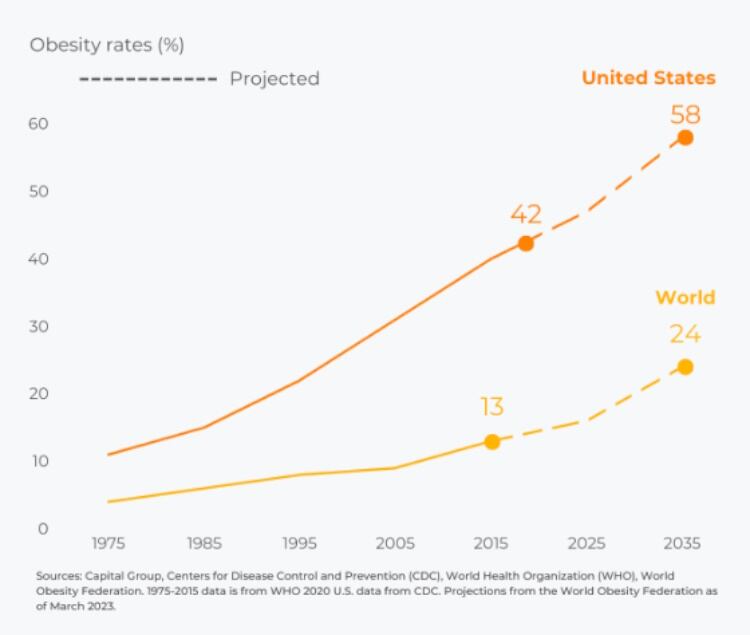Comet contends its four macro market trends for 2024 are a sign of the times.
“Interestingly, this year’s microbiome predictions have more to do with physical and social trends than they do with gut health, and this is a true sign of the times,” said Hannah Ackermann, registered dietitian and a director for Comet.
“We’ve looked at all aspects of the target biotic consumer, including what health motivators are driving them right now, generational and gender differences and what they see as perceived value.”
After reviewing multiple avenues of market research, the team “has identified four primary Macro Market Trends that drive what we see as the Top 10 Biotics opportunities,” said Ackermann.
Added chief business officer Loula Merkel, “This will be an interesting year ahead, as we’re seeing new ways to help brands grow market share with target-right products that resonate with both old and new biotics consumers.”
Trend 1: Offering an Ozempic alternative

With obesity rates continuing to soar – over 750 million individuals worldwide are classified as obese – it’s unsurprising that consumers have become enamoured by a magic bullet like Ozempic.
The Ozempic effect is intoxicating: promising dramatic weight loss without the fuss of calorie counting or exhausting exercise. Ozempic – and other incretin-based therapies like Wegovy and Mounjaro – mimic a glucagon-like peptide that regulates appetite in the brain, leaving people feeling sated for hours. In 2023, 1.7% of Americans were prescribed a semaglutide drug, losing between 10.5 and 15.8 pounds of unwanted weight. This has led to high consumer demand and the food industry is certainly feeling the impact. CPG food manufacturers and retailers – including Walmart – are understandably concerned about the reduced food consumption.

However, these pricey medications are not a sustainable option for many and Comet emphasises that prebiotic fibers are in an ideal position to leverage this opportunity as they can improve insulin responses and satiety or a feeling of fullness after a meal.
When bacteria ferment prebiotic fibers in the large intestine, it leads to the release of not only GLP-1 but also another crucial appetite-decreasing hormone known as PYY (peptide YY). These independently suppress appetite and are associated with lower body weight and improved glucose regulation. Because the additional release of GLP-1 and PYY takes place hours after a meal, it effectively reduces cravings between meals and diminishes the overall desire to eat during the subsequent meal.
Trend 2: Making believers out of Gen Zers

If brands are not clued into Gen Zers yet, they should be, as this group will surpass Millennials as the largest consumer base in the US by 2026.
This group embraces a holistic approach to wellness, recognizing the interconnectedness of physical and mental wellbeing. They are especially clued up on the importance of a thriving gut and have the highest purchase rate of immunity-boosting and gut health food.
They are also the first generation to grow up as complete digital natives and use social platforms to access to trending health and wellness knowledge.
Brands can build loyalty by demonstrating alignment with their socially conscious values. But while visually appealing short-form content will catch yhe eye of Gen Zer, transparency about a product’s ingredients, sourcing and manufacturing processes are critical.
Trend 3: Formulating for women across ages and life stages

Women are developing a more open and proactive and holistic approach to managing their reproductive health and no longer afraid to talk about vaginal and reproductive health, opening possibilities for brands to provide a more personalized women’s approach.
However, product developers need to understand a woman’s unique needs and the variability of those needs throughout their lives, from the onset of the menstrual cycle through to menopause and beyond. Also complex is the needs of the different generations, with Millennials having children later in life (which comes with increased fertility and maternal health challenges) and Generation X wanting to talk about age-related health topics like menopause.
There is no one-size-fits-all solution here, however, there is potential for products to manage and ease symptoms by supporting gut microbiome diversity. Prebiotic fibers and probiotics blends can expand products catering to women’s health into snacks, bars, yogurts and even dessert categories.
Trend 4: Appealing to consumers driven by perceived value

In this inflationary environment, cost-effective products that deliver multiple synergistic benefits – whether actual or perceived – are the name of the game. Although inflation is decelerating, 64% of consumers maintained they are still experiencing inflation-related stress, according to Comet research.
Consumers are showing a preference for downgrading, but Comet believes product developers can upgrade their offering by adding prebiotic fibre. More than just a health benefit, the company’s patented upcycling technology used to generate its own dietary fibers lends itself to sustainability and environmental efficiency messaging that can improve label.





